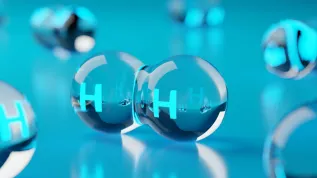
Biotechnologists and papermakers from the Lodz University of Technology have patented the method that 'eats' rubber and converts it into paper. This allows to turn used tyres into biodegradable packaging.
The researchers employed the bacterial strain Lactiplantibacillus plantarum to produce biocellulose. In this process, the bacteria draw energy from the rubber waste. Unfortunately, due to high water retention and insufficient strength, bacterial cellulose is not suitable for paper production.
'We have developed a special composite, a mixture of plant and bacterial cellulose, thus improving the physicochemical properties of obtained paper, which becomes impermeable to air and, of course, biodegradable', explains Dr. Tomasz P. Olejnik. He developed the method together with Dr. Katarzyna Śliżewska, Dr. Marta Pietras from the Faculty of Biotechnology and Food Sciences, and Dr. Magdalena Kmiotek from the Centre of Papermaking and Printing of the Lodz University of Technology The innovative solution is protected by several patents.
According to the solution authors, the paper obtained using this method can be used for the production of packaging materials that can replace plastics. They add that tyres are toxic and hardly biodegradable; accumulated in landfills, they pose a major ecological and economic problem.
PAP - Science in Poland
kol/ ekr/ kap/
tr. RL













